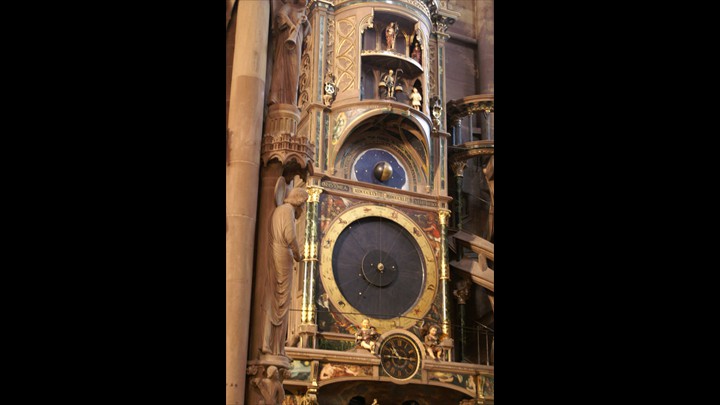Strasbourg in Alsace is one of the most beautiful cities in the world - not least because of the city's landmark, the famous Strasbourg Cathedral. The Münsterplatz is considered one of the most beautiful market squares in Europe, also because there are numerous picturesque half-timbered houses, some with four and five floors. The famous, richly decorated Kammerzell House (French: Maison Kammerzell) is certainly a showpiece of Münsterplatz. The historic old town lies on an island between the two arms of the Ill, is called "Grande Ile" and was declared a World Heritage Site by UNESCO due to its diverse architecture. It is remarkable that an entire city centre received this award. Strasbourg is the seat of numerous EU institutions such as the European Parliament, the Council of Europe and the European Court of Human Rights.
 Remains
of the 14th century city fortifications.
Remains
of the 14th century city fortifications. on Münsterplatz is a merchant's house from the 15th - 16th centuries.
on Münsterplatz is a merchant's house from the 15th - 16th centuries.




 former tannery
former tannery
The Cathedral
The impressive Cathedral of Strasbourg (Liebfrauenmünster/La Cathédrale Notre-Dame) celebrated its 1000th anniversary in 2015. The 140 m high tower, the main facade with the portal statues and the rose window with a diameter of 15 m are very impressive. Inside the cathedral the angel pillar, the pulpit, the astronomical clock and also the famous Silbermann organ are remarkable. The sacral building (1015 was begun as a Romanesque church) was built in the Gothic (1235-75) and High Gothic (1276-1330) styles. The south tower, which was never completed, can be climbed up 332 steps to the platform, which is 66 metres high. The restoration of the top of the cathedral tower was completed in 2003. Cold, water and exhaust fumes made the sandstone crumble.
 The north tower is 142 m high
The north tower is 142 m high and the rose window (15m diameter)
and the rose window (15m diameter) Theme of the tympanum: the Passion of Christ
Theme of the tympanum: the Passion of Christ 103 m lang, 32 m hoch
103 m lang, 32 m hoch with the rosette window
with the rosette window and swallow nest organ
and swallow nest organ


 south side
south side
St. Thomas Church
In 1196, the fortress-like, massive west façade was built on the remains of a predecessor church in the late Romanesque style. Around 1270/1280 the choir and the transept with the crossing tower in Gothic forms were built. This was followed by the construction of the nave as a hall church until around 1330. The construction work ended in 1521 with side chapels in the late Gothic style..
The main organ was built in 1741 by Johann Andreas Silbermann. The choir organ from 1905 by Dalstein-Haerpfer according to plans by Albert Schweitzer. Wolfgang Amadeus Mozart already played the Silbermann organ in 1778.
Eglise Saint-Pierre-le-Jeune protestant
(Protestant Young Saint Peter Church)
In Merovingian times there was a chapel of St. Columban with a pilgrims' hostel on the site of today's church. In 1031 Bishop Wilhelm founded the collegiate monastery of St. Peter here. A Romanesque monastery complex was built. The church was renovated in Gothic style until 1320.
Three of the four arcades of the cloister date from the 11th century, the fourth from the 14th century.
The Gothic main building with its numerous chapels and elaborate ribbed vault dates from the 14th century. Numerous frescos, tomb slabs and monuments, the baptismal font, the central image of the main altar and the rood screen, now unique in Alsace, are preserved from this period and the following century and a half.
In the year 1780 the rood screen organ (restored in 1948 and 1966) by Johann Andreas Silbermann was built, which enjoys supra-regional fame. The instrument has 41 stops on 3 manuals and pedal.
-
 Young
Saint Peter, Protestant
Young
Saint Peter, Protestant -

-
 Arcades from the 11th and 14th century
Arcades from the 11th and 14th century 
-
 with Silbermann organ
with Silbermann organ -
 interior view
interior view -
 with gothic baptismal font
with gothic baptismal font
|
|
 from the 12th century
from the 12th century



